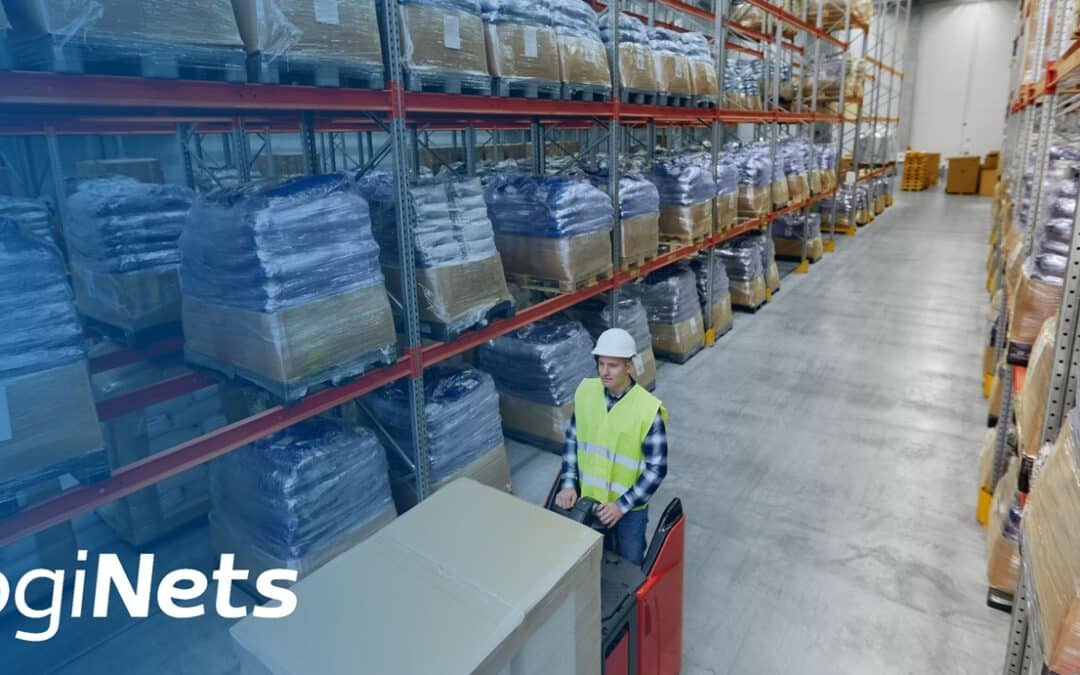On-site warehousing is a critical but often overlooked part of successful large-scale projects. The project isn’t finished once materials have been safely delivered to site, and sometimes they may have to wait in a warehouse for quite a while. And, of course, it needs to be easy and fast to find them when they are needed. Keeping the warehouse well-functioning and in order is a part of good supply chain management.
Here are five of the biggest challenges in on-site warehousing, along with practical solutions for each!
1. Limited Space and Lack of Layout Design
Construction sites or industrial projects often have constrained, temporary warehousing areas that aren’t optimized for storage or movement. Poor layout leads to congestion, delays, and safety risks.
Solution:
- Plan the layout upfront with input from logistics and field teams. Use 3D modeling or BIM if possible.
- Zone the warehouse by material type, usage frequency, or phase of use (e.g., current, near-future, reserve). Take into account things such as material size and ideal warehousing conditions.
- Consider modular or mobile storage solutions to adapt to space changes over time. Towards the end of the project, for instance, there can be a lot of empty space in the site warehouse, which can be used more efficiently.
2. Inefficient Inventory Management
Manual tracking, with e.g. paper lists or Excel files, often leads to misplaced items, overstocking, or shortages. Searching for materials, perhaps not even knowing what is already in stock and what is still expected to arrive, disrupts schedules and can cause unexpected costs. Delays can also cause bottlenecks where materials stack up, which can cause congestion.
Solution:
- Use digital inventory management systems or warehouse modules in project logistics software that provide real-time visibility. Such a system can also be used to create picklists that facilitate picking up materials from the warehouse.
- Implement barcode, QR-code or RFID tracking to automate check-in/check-out and stock counts.
- Integrate tracking with procurement and project schedules.
3. Poor Coordination with Site Operations
Materials may arrive too early (taking up space) or too late (halting progress), due to a disconnect between the warehouse and the work phases. Fluent communication is needed between project parties.
Solution:
- Establish a just-in-time (JIT) delivery model where feasible.
- Use material delivery schedules aligned with project milestones and update them dynamically. Make sure all project parties have access to these.
- Appoint a material coordinator who serves as a bridge between warehousing, procurement, and site supervisors.
4. Material Damage and Loss
Harsh site conditions, improper storage, and high material turnover lead to loss, damage, or theft. These, of course, impact both cost and timeline. It is vital to plan ahead and know which materials can be stored outdoors, which require a warm indoor storage, etc.
Solution:
- Conduct regular inspections and clearly label materials. Open box inspection (OPI) is a useful practice with which deviations are easy to spot at an early stage.
- Invest in proper storage conditions (sheltered areas, pallet racking, weatherproof containers). It is also a good practice to have all arriving materials clearly marked with their ideal warehousing conditions. This will speed up their handling, too.
- Use access control and surveillance for security and monitor material movement digitally.
5. Safety and Compliance Risks
Warehouses are busy, high-risk environments. Poor handling practices, clutter, or non-compliance with safety regulations can lead to accidents or penalties. Undertrained staff can end up in many close call situations and even severe accidents.
Solution:
- Train warehouse staff in safe material handling and site-specific safety rules. Make sure each staff member has received proper training.
- Keep walkways and emergency exits clear and marked.
- Conduct routine safety audits and implement a reporting mechanism for hazards.
- Integrate compliance tracking into your digital tools to maintain visibility and accountability.
Conclusion
Large-scale industrial projects often have hundreds of suppliers from all over the world. It would be easiest if materials were always delivered in the right order for the project, but this is hardly ever possible due to many factors affecting each supplier’s schedules and material availability. Thus, warehousing on site is necessary and can be quite a puzzle, if it is not carefully planned.
Modern software systems and practices ease operations and help run the on-site warehousing more smoothly. A good material handling system will help you track down all materials, no matter what part of the supply chain they are at; even the smallest pieces can be located. When the physical warehouse is well organized, together with a modern software solution, your project’s material stream will run fluently from start to finish.
Sources
https://www.hopstack.io/blog/top-10-warehouse-management-challenges
https://www.wsinc.com/blog/warehouse-challenges/
Want to discuss this topic further? Get in touch!



